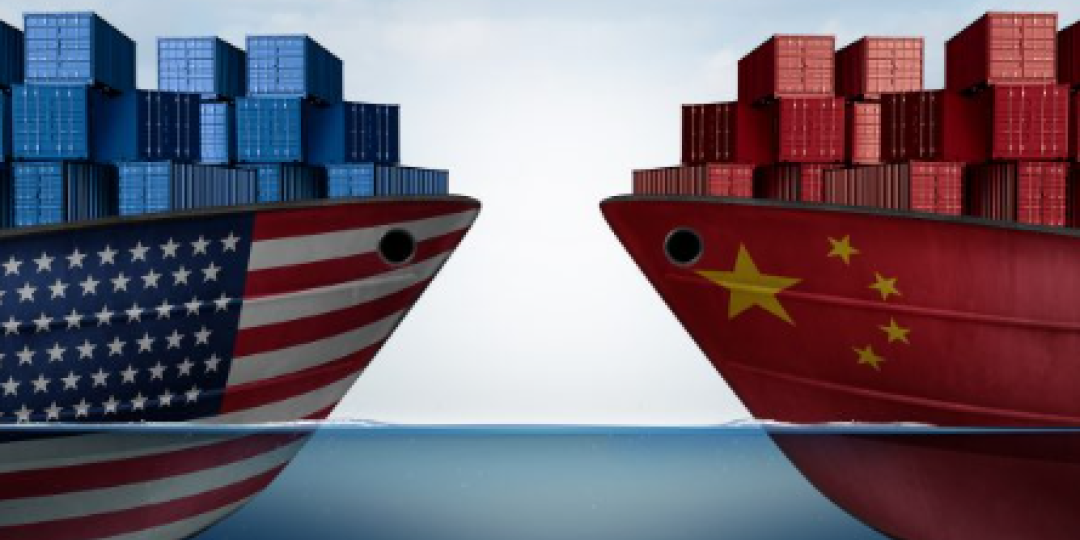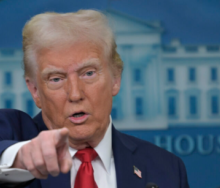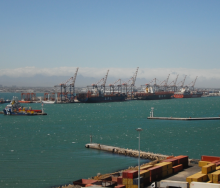Shipbuilding and maritime trade are emerging as new fronts in the US-China trade war, and unlike President Donald Trump’s call for blanket tariffs, his shipping crackdown seems to have support across the political spectrum in Washington.
Bloomberg reports China has targeted seafaring and logistics sectors for dominance, effectively undercutting the competition and winning market share “with dramatic effect,” a spokesperson from the Office of the US Trade Representative said on Friday.
The plan would impose several service fees — including a levy of as much as $1 million — to be charged when Chinese-built vessels enter a US port.
It would also steadily escalate restrictions on maritime transport of all US goods. Initially, at least 1% of American products exported by maritime vessels would have to be carried on vessels that are both US-flagged and -operated. The requirements would steadily rise, with the threshold climbing to 15% after seven years and eventually encompassing requirements for the ships to be built in the US too.
The push to revive US shipbuilding and add penalties for Chinese-built and owned vessels is supported by labour unions and lawmakers of both parties, and spans the administrations of both Joe Biden and Trump.
“Today, the US ranks 19th in the world in commercial shipbuilding, and we build less than five ships each year,” Biden’s USTR Katherine Tai said in January.
That’s in contrast to the more than 1 700 ships built in China each year, she said.
The United Steelworkers, International Brotherhood of Electrical Workers, International Brotherhood of Boilermakers, and International Association of Machinists and Aerospace Workers urged quick action on the findings, which wrapped up before Trump took office.
“We urge you to impose tough penalties against vessels built according to the plans, policies and actions of the Chinese Communist Party and to adopt complementary policies that rebuild America’s shipbuilding capacity and workforce,” the unions’ leaders wrote in a letter to Trump dated February 19.
National Security Advisor Mike Waltz, then a member of Congress, last year co-sponsored legislation to address China’s maritime advantage. The SHIPS for America Act was introduced in December by bipartisan lawmakers, including Senator Mark Kelly, a Democrat, and Republican Senator, Todd Young, and continues to make its way through Congress.
At the heart of these proposals is boosting US national security. Commercial shipping is viewed as a major leverage point China could exploit given the global trading system’s dependence on its vessels.
Yet disruptions to that system could lead to supply chain shocks that clog global ports and paralyse shipping routes. Some experts argue proposals like USTR’s and those contained in the SHIPS Act would increase costs for US businesses and consumers.
“A significant portion of imports entering the US via ports would be directly subject to hefty fines, as these additional expenses would likely be passed on from the carrier to shippers and, ultimately, to importers and exporters,” ING economists Inga Fechner, Lynn Song and Rico Luman wrote in a note on Monday.
Bloomberg furthermore reports that it’s also not clear that the proposals would be enough to restore American shipbuilding capacity, which has eroded despite century-old protections meant to encourage the use of US-built and -operated vessels. Industry analysts also cite a shortage of merchant mariners required to operate these ships.
“Whether it’s the Panama Canal situation, the complex reciprocal tariffs or the just-unveiled initiative to tax ships with a China connection each time they call on a US port, these inject chaos, uncertainty, and above all, unnecessary costs into the container shipping supply chain,” wrote John McCown, an industry veteran and founder of Blue Alpha Capital.
“Those extra costs will be borne by American consumers if these initiatives are implemented,” McCown said. “That’s actually the best-case scenario.”
Chinese shipping stock declined after the Trump administration released the proposal. The USTR’s comment period ends on March 24th.













